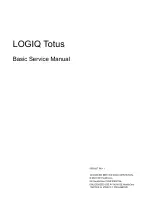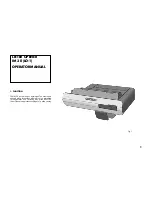
VAG Operation and Maintenance Instructions • 9
6.3.2 Cleaning and lubrication
For maintenance work specified in accordance with DVGW W392
the lubricant for drinking water lines approved for foodstuffs or
drinking water must be used.
• KLÜBERSYNTH VR 69-252 N (with KTW approval for drinking
water) manufactured by Klüber Lubrication München AG
6.3.3 Visual and function check
• Easy movement of hydrant shut-off
• Check whether the claw (1.1) and the self-closing cover for
standpost application are undamaged.
• Drain function of the hydrant. Complete draining should be com-
pleted within 5 minutes. Should draining not take place within
this period it is highly probable that the drain hole is clogged.
The following may resolve the problem:
a) Create internal pressure (max. 24 bar) using a manual pump
with the shut-off closed
b) Disassemble main valve assembly and mechanically clean ( e.g.
slat with nails) drain hole (see 7.1)
c) If a) and b) are unsuccessful, the fitting will have to be excavated
and replaced
• Function and cleanliness of internal parts of hydrant, cleaning
by flushing a short time, water always leads away from stand-
pipe and hose without any problem.
• Tightness of the hydrant shut-off. The frequent cause of leaks
is foreign matter (e.g. plastic shavings, etc.) These can be re-
moved by flushing or by extraction using auxiliary tools.
6.4 Maintenance
Make sure to follow 6.1 for all maintenance and servicing work.
Refer to VAG spare parts list KAT 1622-E for all required spare
parts.
Figure 8 shows a schematic representation of the safety interlock.
Depending on the type of hydrant, this may look different in some
details.
The VAG HYDRUS
®
G Underground Hydrant has an integrated
safety interlock for the main valve assembly. If after removing the
bonnet (7.1) the main valve assembly is moved upwards it can-
not be expelled from the jacket pipe. The integrated internal fixed
stop on the front side of the jacket pipe prevents this. After turning
approx. 30° clockwise the main valve assembly is unlocked and
can be extracted. This makes it impossible for the main valve as-
sembly to be expelled unintentionally due to uncontrolled residual
pressure.
6.4.1 Disassembly of the entire bonnet (7.1)
Clean the upper section of the underground hydrant in the area of
the bonnet. Remove the two bolts (8) on the bonnet attachment.
Turn stem square cap (9) clockwise until stem (7.3) is completely
unwound from stem nut (15.3). Remove the bonnet from above.
Caution!!! The stem nut is inserted loosely in the stem
nut retainer and may fall into the pipe jacket!
6.4.2 Replacing the stem (7.3); packing sleeve
(7.2) or sliding disks (7.4)
Disassemble bonnet as described in 7.5.1. Remove the stem
square cap (9) by loosening the cylinder screw on the front side.
Pull off the stem square cap and the name plate. Completely undo
the screw connection between the packing sleeve (7.2) and the
bonnet (7.1). Pull off the stem (7.3) and completely disassemble
all individual components. Replace parts as necessary in accord-
ance with Spare parts list KAT 1622-E. Assembly is done in the
opposite order.
6.4.3 Replacement of the complete main valve
assembly (15) or the valve cone (15.3)
When removing the main valve assembly (15) make sure to ob-
serve the general safety instructions in 6.1.
Before beginning disassembly open the hydrant for a short time
with opened initial gate valve (approx. 3-4 turns clockwise) to allow
any air collected upstream from the hydrant shut-off to escape.
The initial gate valve can then be closed with the hydrant shut-off
in open position.
Clean the upper section of the underground hydrant in the area of
the bonnet. Remove the two bolts (8) on the bonnet attachment.
Turn stem square cap (9) clockwise until stem (7.3) is completely
unwound from stem nut (15.3). Then turn the stem (7.3) back ap-
prox. 3 turns in clockwise direction.
Use both hands to grasp below the bonnet (7) and pull up as far as
it goes. You may need to employ additional tools. Then screw off
the stem in clockwise direction and pull off the complete bonnet
from above.
Caution!!! The stem nut is inserted loosely in the stem
nut retainer and may fall into the pipe jacket!!!
Use stem nut (15.1) to turn main valve assembly approx. 30° anti-
clockwise and then completely remove from above.
Then grind off the front part of the bottom bolt rivet (15.4) below
the valve cone (15.3) and knock out the bolt rivets. From below pull
the valve cone out of the pressure pipe (15.2) and insert the pre-
drilled replacement valve cone and fasten using the included bolt
and the self-securing cap nut.
30°
Picture 8: Maintenance





























